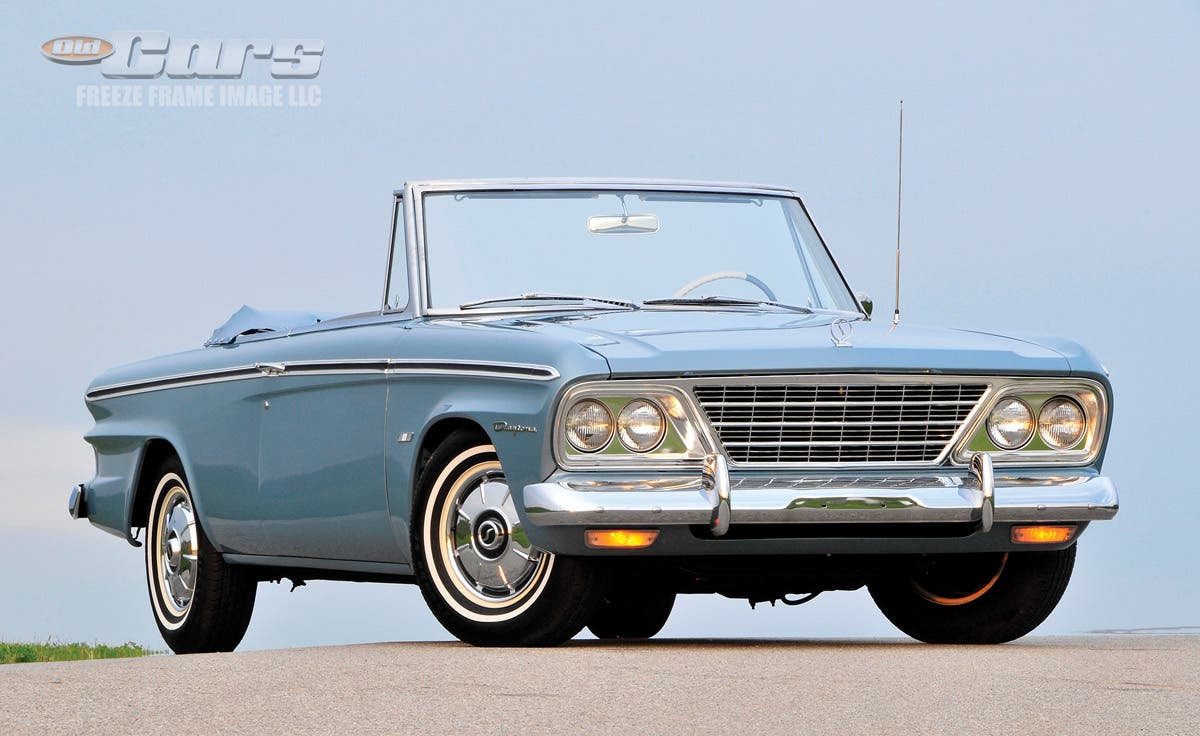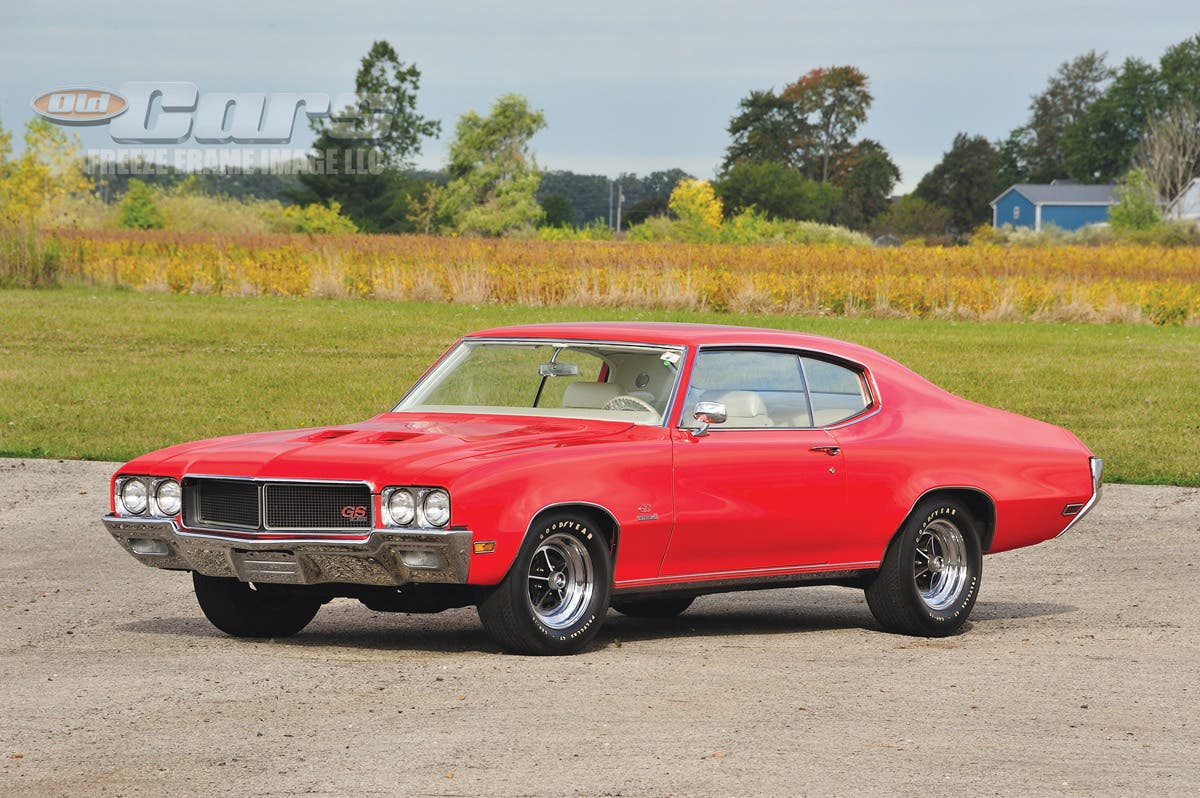Car of the Week: 1971 AMC Javelin AMX
Scott Raney never figured he’d have to leave Arizona and head north to the “rust belt” to find a car, but when the Phoenix resident finally got the chance to turn back the clock and land a 1971 AMC Javelin AMX like the one he had in high school, he was willing to fly just about anywhere.
By Brian Earnest
Scott Raney never figured he’d have to leave Arizona and head north to the “rust belt” to find a car, but when the Phoenix resident finally got the chance to turn back the clock and land a 1971 AMC Javelin AMX like the one he had in high school, he was willing to fly just about anywhere.
What Raney found when he arrived in Detroit was an unmolested survivor that was even better than he could have hoped. The orphaned muscle machine needed some attention and cosmetic help, but as far as Raney was concerned, he had hit the jackpot. He had owned a 1973 Javelin AMX during his younger days, but it had to be sacrificed when he went off to college. He knew there weren’t many others around — at least not nice originals — and he didn’t have to think too hard about the Mustard Yellow AMX he found in the Motor City.
“I’m 50 years old now, and when I was 18, we had moved to Florida and I had a ’73 AMX and I absolutely loved the car,” Raney recalled. “I always wanted another one, and finally about seven or eight years ago I put an ad on one of the AMC forums saying that I was looking for a restorable ’71 to ’74 AMX, but I really didn’t expect to get anything from it.”
He got a reply from a man in Detroit who owned a nicely preserved ’71, got to see some pictures, and before he knew it, he was cruising down Woodward Avenue with four other people in the car and trying to figure out how he was going to get the car home.
“I hadn’t driven one since I had gotten rid of my old one in, like, ’83,” Raney laughed. “When I went to Detroit, the guy and his wife couldn’t have been any nicer. I was there all weekend, and the weather was nice because it was August, and the guy said, ‘Let’s go out to dinner and go cruise Woodward Avenue.’ He threw me the keys and said, ‘You drive, you’re buying it.’… It was great. It kind of scared me at the time. I was really shocked at how well it did run. It was a little bit ratty, but it drove really nice. It still had the original carpet in it, so it was all pretty much the way it came from the factory.”
The brightly hued Javelin had gone through at least a couple of previous owners, but apparently sat untouched for many years. The man Raney bought the car from had only put 3,000 miles on it between 2001 and 2005, and the odometer showed just 32,000 ticks when he brought it home.
“The guy I bought it from bought it from a used car lot in western Michigan, and they had taken it in on a trade from a guy who had to get divorced and had to get rid of it,” Raney said. “They had parked it for a long time. I don’t know how long, but I think it sat for quite a while. Otherwise, I’m sure it would have been history.
“It hadn’t been driven much, but I think it was driven hard back when it was on the road.”
And there definitely weren’t many on the road, even when the Javelin AMXs debuted for 1968. Only 2,054 examples were produced in ’71, which was the first year the nameplate was used on the four-passenger Javelin. Previously, AMXs had been power-packed two-seaters, and the AMX monicker turned the Javelin into a completely different machine.
The 1971 Javelin was completely re-styled. Prominent, sculpted fenders, a twin-canopy roof and new full-width tail lamps made the cars look even bigger and heavier than their 3,244-lb. listed weight. The interior was completely redesigned and upgraded. It featured a curved cockpit-type instrument panel inspired by aircraft motifs. In addition to having a rear seat and entirely new profile, the new AMX had a rear-facing cowl induction hood, flush wire mesh grille and optional front and rear spoilers that were credited to Mark Donohue, who raced Javelins to victory on the SCCA Trans-Am circuit where AMC won the championship that year.
With its flamboyant design and loud colors and graphics, the AMX definitely stood out in a crowd, and it packed plenty of fun under the hood, too. The base two-barrel 360-cid V-8 was rated at 245 hp, but for a few more greenbacks added onto the AMX’s $3,432 base price, one could jump up to a 285-hp “Go Package” 360 with a four-barrel carb. If they really wanted to dust somebody between stoplights, buyers could go to the top of the menu for the 401-cid V-8 that offered 330 hp.
Raney’s car is equipped with the Go Package 360, power disc brakes and a few other extras. It came with an AM radio and no power steering. “It’s very similar to my first car, but my ’73 had air conditioning. This one does not,” he said. Raney added a power steering unit “because I’ve got a really tight corner to get in my garage. After doing that for a while, I said, ‘This is not going to work,’ so it has power steering now.”
Raney was wary of the rust problems that often plagued the Javelin’s unibodies back in the days when they were daily transportation, but he found no such issues with his orange car. “It had been Ziebarted and didn’t have much rust,” he said. “When I got it, it had probably 70 percent of the original paint, but whoever had it had put dents and creases on all the fenders in the front and back. These cars are hard to see out of, especially the back window, and whoever had it didn’t know how to aim it very well. It had creases on both back fenders, and on both sides in front. It had them in all four corners — it was pretty funny.”
Raney drove the AMX the way he bought it for about a year, then decided to take the car in and have the body worked on and repainted. That process started in April of 2007 and he had the car back and ready for car shows one year later.
In addition to the paint and bodywork, Raney swapped in a new automatic transmission, bolting in a circa-1972 AMC TorqueFlite in place of the original Borg-Warner transmission. “1971 was the last year for the Borg-Warner in these cars, and it was not really known for being a performance transmission,” he said. “In ’72, they went to the TorqueFlite… so I went with that and put a 727 [TorqueFlite] in it.”
For now, the AMX also has an Edelbrock intake and carburetor, and Holley Super Comp ceramic headers, but Raney still has all the original items and has not ruled out returning the car to its factory dress at some point.
“Actually, I was tempted to do more to soup it up, but as I got into it and realized how rare it is, I decided not to do too much. I keep thinking eventually it will get the recognition it deserves. If I do want to put it back to original, it wouldn’t take much.”
Aside from a new headliner and new seat coverings, the interior is original. One thing Raney did not consider changing was the car’s sassy color. It would have simply been too much of a personality change for a machine that was meant to seek attention.
“It’s a base coat-clear coat, so I did do [the modern] two-stage, but I stayed with the original Mustard Yellow,” he said. “After I got the car everybody kept asking, ‘Are you really going to repaint it the same color?’ It’s not my favorite color, but I didn’t really have a choice. It needed to stay this color. It looks like Velveeta cheese, that’s what I tell everybody.”
Raney has put about 3,000 miles on his AMX since acquiring the car. That’s not much, but the car has certainly met his expectations as a fun weekend cruiser and great conversation piece at car shows. He doesn’t street race and do all the crazy things he did with his first AMX back in Florida, but his orange car can still crank his heart rate up on any straight stretch of road.
“It’s fun on an entrance ramp!” he says. “You can still do the 0-to-60 in no time. It’s incredibly firm and the handling is really surprising. The power steering is really soft, so it really feels over-assisted, which is typical of cars in the early ’70s. There’s really not much steering feel with it. On the highway or on the freeway, it’s great. It’s got a ton of power, it’s quiet and it handles great at speed. It hugs the road better than you would think it would.”
Raney also has a 1968 Cadillac deVille that he is working on, and Mustang GTs from 1986 and 1994. None of the others brings back the same feeling of nostalgia that the AMX does, however. “I will hang onto it for a long time, just because it means a lot to me and brings back a lot of memories,” he said. “And nobody else has one. That’s the best thing, plus every time I drive it, it always brings a fun compliment of some kind. Positive or negative — people like to make fun of the color — it never fails to get some fun comments, and I like that."
______________








